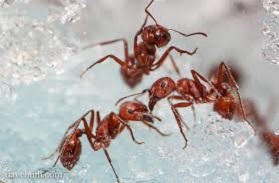World Animal Protection commends the decisive action by the Kenyan judiciary and the Kenya Wildlife Service (KWS) following today’s conviction of four individuals involved in the illegal trafficking of over 5,000 giant African harvester ants (Messor cephalotes).
This landmark ruling, which saw fines of Ksh 1 million (USD $7,700) levied against each offender — or a 12-month custodial sentence — sends a clear message that Kenya is serious about combating the rising threat of biopiracy targeting lesser-known, yet ecologically vital species, stated World Animal Protection.
The convicted individuals — two Belgian nationals, a Vietnamese national, and a Kenyan citizen — pleaded guilty to charges of illegal possession and trafficking of protected wildlife species. The ants, valued locally at approximately Ksh 1.2 million, were intercepted before being smuggled to lucrative markets in Europe and Asia, where such colonies can command prices upwards of USD $1 million.
“We welcome this timely judgment, which rightly recognises that wildlife crime does not end with iconic species such as elephants and rhinos,” said Edith Kabesiime, The Wildlife Campaign Manager at World Animal Protection. “The trafficking of lesser-known species like the giant African harvester ant undermines biodiversity, threatens delicate ecosystems, and robs local communities of their natural heritage.”
World Animal Protection applauds the collaborative efforts of the Kenya Wildlife Service, law enforcement, and the judiciary in ensuring accountability in this complex case. However, the organisation emphasises that today’s ruling must be a starting point — not the culmination — of Kenya’s fight against biopiracy.
Edith Kabesiime added, “This ruling is coming at a time when Kenya is in the process of reviewing her Wildlife Conservation and Management Act. As wildlife crime syndicates diversify their targets, our legal frameworks and penalties must evolve in tandem. We urge policymakers to adopt stricter penalties and bolster enforcement capacity to ensure that both the perpetrators and profiteers of wildlife crimes face meaningful deterrence.”

